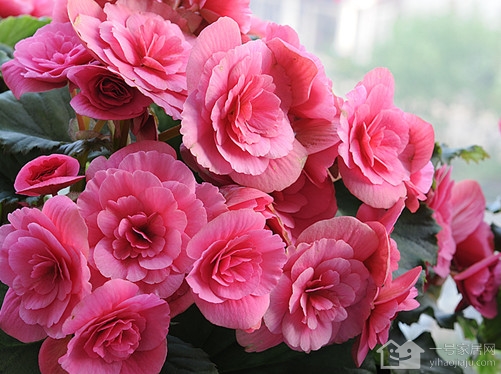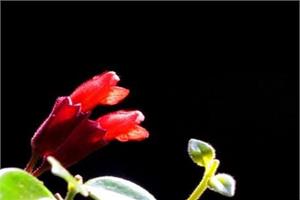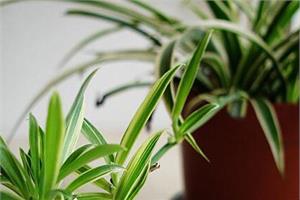Rieger Begonia has a beautiful breed in the way of water insertion.
Some owners like to raise some plants at home, on the one hand, it can purify the air in the home, on the other hand, we can also play the role of decoration. Today, what we need to know is the insertion of Rieger Begonia. There are many ways to insert crabapple, and the next thing we need to know is the way of water insertion of Rieger Begonia.

The propagation method of using plant vegetative organs (roots, stems, leaves) to form independent plants is called cuttage. The plants cultivated by this method grow faster than sowing seedlings, and can be cultivated into large seedlings in a short time, especially some plants which are not easy to bloom, for flowering plants.
There are many kinds of substrates, mainly soil, sand, and water. Water insertion is a relatively sanitary, simple and advanced method, but we should pay attention to changing water frequently and keep the water clean, preferably pure water. If it is tap water, it should be hung for 2-3 days. In order to prevent the breeding of bacteria, steel and charcoal can be added to the water. Begonia can also be inserted in water. Rieger Begonia has a weak effect, but you can try it.
The method of cutting can be divided into leaf cutting and branch cutting. Leaf cutting refers to taking the leaves of a plant as cuttings to make it take root and grow leaves, so as to become a complete plant. But the plants that can insert leaves are very special, begonia can do it, Rieger begonia can be inserted, but to choose a strong petiole, veins or thick leaves and the success rate is very low. Stem insertion is more common, the general use of twigs and hard branches. There is also a kind of root cutting. these roots refer to the production of adventitious buds on the roots. This plant is also quite special and will not be discussed here.
Just talk about the cutting method of Rieger Begonia. When inserting branches, the length of the branches should be moderate. Cut the lower part of the branches into horseshoe shape with a blade and insert them 1/3 deep into the soil. Water them gently, and be careful not to have waterlogging, otherwise there will be waterlogging. The plants obtained by branch insertion have no underground tubers. After 3 weeks of leaf insertion, fibrous roots can also grow in the lower part of the petiole, but it will take another month and a half to grow adventitious buds from the petiole and gradually unearthed.
Insertion skills of Rieger Begonia
First of all, about the selection of breeding season. Rieger crabapple has a strong fecundity and can be carried out in four seasons in principle, but as far as my planting experience in the north is concerned, the highest success rate is in late autumn and early winter. Often the late autumn and early winter season is also the best time for many plants to be trimmed and shaped, when the cut new branches can be used as cuttings. The temperature had better be kept at about 20 degrees, when the speed of the root is relatively fast, and the success rate is the highest.
Secondly, about the media of insertion. The matrix I use is vermiculite. A large bag can be wholesale for 10 yuan in the flower market wholesale market, which is enough for reproduction. In addition, coconut bran bricks are also very practical after soaking in water, and the price is not expensive, about seven or eight yuan to buy a large coconut brick, which can be used to raise seedlings in 20 or 30 pots. At this time, flower friends must not be greedy to save trouble and casually use some messy flower soil to insert, so that although there is the possibility of success, but basically depends on luck, if the flower soil is infected with germs, the success rate is basically zero.
Third, about the insertion steps. We can cool the cut cuttings for an hour or two, dry the cut, insert it into the medium, and then pour some water to wet the medium. (you can also wet the medium by spraying water in advance) put it in a place where there is scattered light and ventilation, and in about half a month, the cuttings will take root.
It needs to be reminded that Rieger Begonia requires patience in inserting skills. Many flower friends are impatient and like to pull out the branches often to see if they have taken root, which can easily lead to the premature death of the young roots just growing out. Here is a little trick to let you know whether our cuttings have taken root, that is, to observe whether there are any new leaves on the branches. If so, it means that our cuttings have been successful.
In addition, flower friends of a higher standard can even try the way of leaf insertion. Yes, it is to insert a large pot of begonia with a leaf. Generally choose the vigorous growth of the more mature leaves, the lower end of the petiole with a blade about 45 degrees oblique cut, and then in accordance with the above Rieger Begonia insert way, can also be propagated successfully. However, because the growth rate of begonia is very fast, there is no need to challenge leaf insertion, unless flower friends want to improve their planting level, then Rieger crabapple must be a good variety that can make you feel confident!
The above is the relevant introduction of this article, I believe you have a simple understanding of this after reading it, if necessary, you can continue to pay attention to the No. 1 home network for more information.
Related
- Wuhan Hospital Iron Tree Blooming Result Was Instantly Frightened by the Gardener Master
- Which variety of camellia is the most fragrant and best? Which one do you like best?
- What is the small blue coat, the breeding methods and matters needing attention of the succulent plant
- Dormancy time and maintenance management of succulent plants during dormancy
- Minas succulent how to raise, Minas succulent plant pictures
- What are the varieties of winter succulent plants
- How to raise succulent plants in twelve rolls? let's take a look at some experience of breeding twelve rolls.
- Attention should be paid to water control for succulent plants during dormant period (winter and summer)
- Watering experience of twelve rolls of succulent plants
- Techniques for fertilizing succulent plants. An article will let you know how to fertilize succulent plants.



